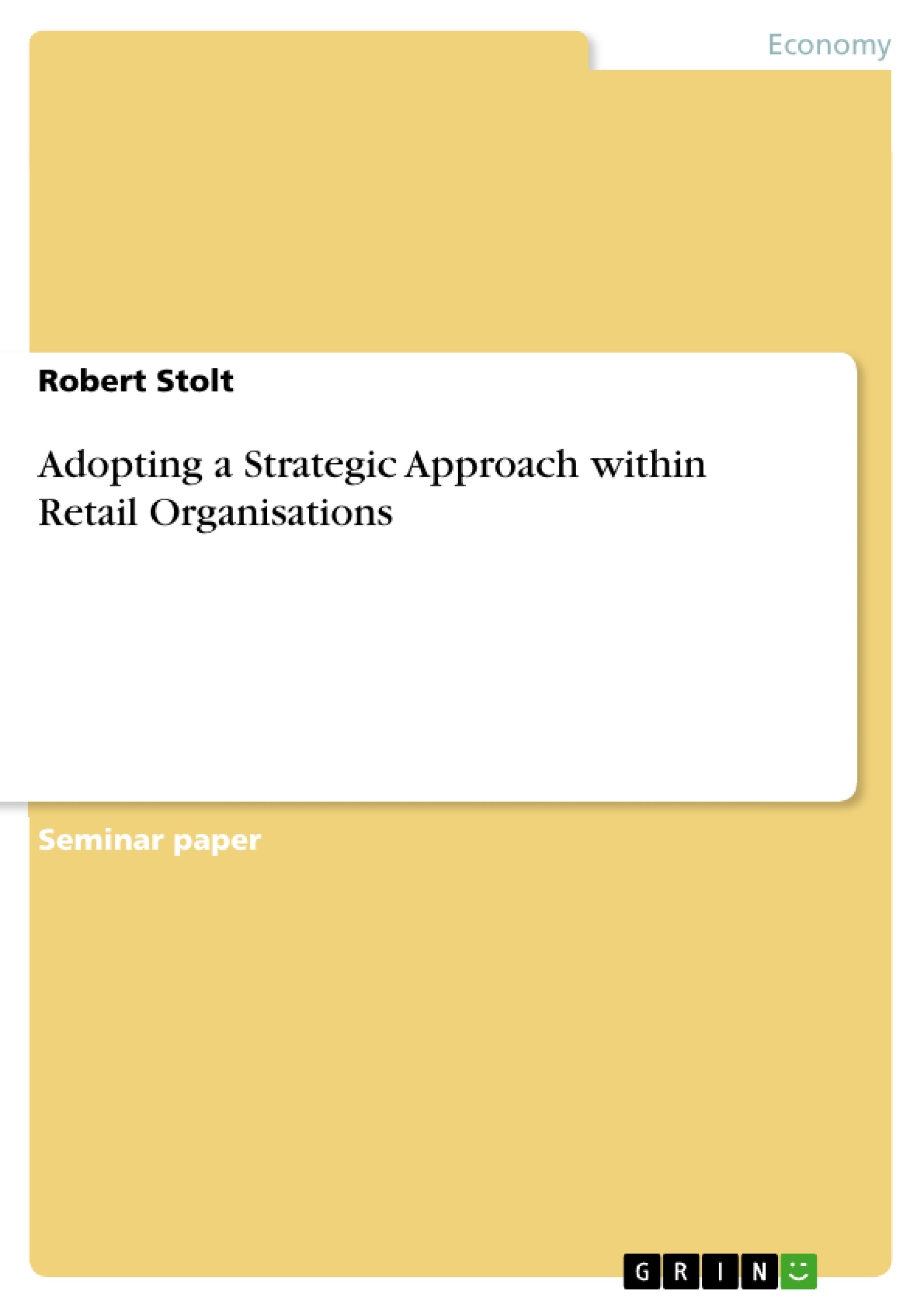“Strategy is defined as the determination of the basic long-term goals and objectives of an enterprise” (Chandler, 1990, p. 13).
As the quote by Chandler suggests, strategy is concerned with the alignment of a corporation to the market in order to achieve its long-term targets. Therefore, the adoption of a strategic approach is essential for large organisations (especially retail organisations) as it is fundamental for the development of a company and consequently its success in the long run. With increasing differentiation in product portfolios, notably in the retail industry (e.g. with retailers like Marks & Spencer or Bhs both adding food to an existing non-food offer, or the grocery supermarket chains offering clothing and other merchandise categories) companies are more frequently separating their product range into several corporate divisions, which are also known as independent, market-oriented strategic business units (SBUs). In this strategy (business strategy), the strategy formulation (i.e. how the company can achieve a competitive advantage in each area of business) is carried out by the head of each business segment. The strategic alignment of each business unit is then determined by the top-level corporate strategy, where decisions are made by the upper management. Next to these two areas of strategy formation (i.e. corporate and business unit level), strategy can equally be developed from a functional viewpoint (also known as functional strategy) when making decisions as to which marketing concepts should be used or which capital equipment the company should employ to be flexible and cost-efficient for example. Within this multi-level structure of strategic decision-making there must be a sufficient amount of co-ordination on all three levels (Megicks, 2007, pp. 484-485).
The overall strategic goal of the organisation, as Porter (1980) describes it, is to achieve “a position of sustainable competitive advantage” and therefore differentiate the value a company generates and offers in comparison to its competitors. These activities to achieve a sustainable competitive advantage should fulfil the following criteria: they should (1) be associated to an attribute with value and relate to the targeted customer segment, (2) be sustainable (not easily imitable), as well as (3) be perceived by the customer (Mintzberg, 1996, p. 88).
Inhaltsverzeichnis (Table of Contents)
- Introduction and Definition of Strategy
- Advantages to Retail Organisations of Adopting a Strategic Approach
- Framework for Strategic Decision-Making within an Organisation
- Conclusion
Zielsetzung und Themenschwerpunkte (Objectives and Key Themes)
This text explores the importance of strategic approaches in retail organizations. It examines the advantages of adopting a strategic approach, providing a framework for strategic decision-making, and outlining how these strategies can contribute to a company's long-term success.
- Defining strategy and its relevance in the retail sector
- Identifying the benefits of strategic management for retail organizations
- Exploring a framework for strategic decision-making within organizations
- Highlighting the importance of aligning corporate strategy with business unit and functional strategies
- Emphasizing the critical role of achieving a sustainable competitive advantage
Zusammenfassung der Kapitel (Chapter Summaries)
- Chapter 1: Introduction and Definition of Strategy
This chapter defines strategy as a long-term goal setting process that aligns a corporation with the market. It discusses the significance of strategic approaches for large organizations, especially in the retail industry, emphasizing the need for differentiation and strategic business units (SBUs) to manage diverse product portfolios. The importance of aligning corporate, business unit, and functional levels of strategy is also highlighted. - Chapter 2: Advantages to Retail Organisations of Adopting a Strategic Approach
This chapter explores the benefits of adopting a strategic approach for retail organizations, focusing on the competitive landscape of the retail industry, characterized by overcapacity, price-driven marketing, and a high concentration of firms. It explains how strategic approaches can foster long-term success by establishing a company's fundamental orientation, building a competitive advantage, and providing a framework for future action. - Chapter 3: Framework for Strategic Decision-Making within an Organisation
This chapter introduces a four-stage framework for strategic decision-making, encompassing strategic analysis, strategy development, strategy implementation, and strategy controlling. It highlights the importance of a multi-stage sequence of decisions, emphasizing the use of SWOT analysis and the overall process of generating a unique strategy aligned with an organization's environment and resources.
Schlüsselwörter (Keywords)
This text focuses on key concepts such as strategic management, retail strategy, competitive advantage, strategic decision-making, SWOT analysis, and sustainable competitive advantage. It delves into the multi-level structure of strategic decision-making, encompassing corporate, business unit, and functional levels.
- Citar trabajo
- Robert Stolt (Autor), 2009, Adopting a Strategic Approach within Retail Organisations, Múnich, GRIN Verlag, https://www.grin.com/document/145270



